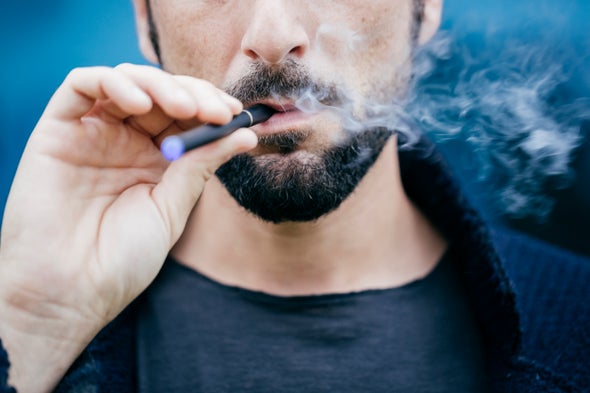
Lung injuries and deaths linked to the use of e-cigarettes and vaping products has continued to rise in the US. The CDC has confirmed 2,290 vaping related lung injury cases and 47 deaths reported as of November 21st, 2019. Cases have been reported in all states except Alaska, along with the District of Columbia and two U.S. territories. Deaths have been confirmed in 25 states and Washington D.C., with more being investigated. Those affected by these illnesses range in age from 13 to 75 years old.
CDC data shows on 514 patients, about 77% reported using THC-containing products in the 30 days prior to the start of their symptoms. However, 16% reported using only nicotine-containing products. The illness is marked by chest pain, shortness of breath and vomiting, and it has largely affected young people. The vast majority of cases, almost 80%, involve e-cigarette users younger than 35, and another 15% are younger than 18.
While the investigation into the cause is still ongoing, the CDC has uncovered a potential cause- vitamin E acetate. Samples taken from the lungs of 29 people with e-cigarette, or vaping, product use associated lung injury or (EVALI) all contained vitamin E acetate. The CDC has also expanded its laboratory testing to include lung fluid, blood, and urine samples from patients, as well as lung biopsy and autopsy specimens.
Vitamin E acetate is commonly used in ingested supplements or skin care, and in those cases appears to be safe. Dr. Anne Schuchat, principal deputy director of the CDC said previous research has found that when vitamin E acetate is inhaled, it may interfere with normal lung function. She said they are no longer seeing such a dramatic rise in EVALI cases as earlier this fall but that some states are still investigating potential cases.
The agency continues to work with the Food and Drug Administration (FDA), states, and health providers to track and investigate this outbreak. The agency is also testing the vapor of e-cigarette products that have been involved in these cases to look for potentially harmful compounds. While it appears that vitamin E acetate is associated with EVALI, evidence is not yet sufficient to rule out contribution of other chemicals of concern to EVALI. Many different substances and product sources are still under investigation, and it may be that there is more than one cause of this outbreak.
EVALI looks and sounds like pneumonia. Symptoms include chest pain, shortness of breath, fever, nausea and vomiting. But it’s not an infection. The antibiotics used to clear up pneumonia don’t help the vaping illness and without knowing if a patient vapes-doctors might pursue the wrong treatment or miss the chance to encourage the person to stop. The CDC reports that some early patients with the illness who have been out of the hospital for several weeks have begun receiving follow-up care. Doctors are reporting that patients’ recoveries have varied, with some patients appearing to make full recoveries and others continuing to have trouble breathing. CDC reported that some patients have relapsed and had to be hospitalized a second time, with readmissions occurring from as few as five days to as many as 55 days after initial discharge.
E-cigarette manufacturers have advertised their products as a better option for adult smokers who are already hooked on nicotine. For thousands of young people who have never smoked, however, vaping plays the opposite role: It establishes a nicotine addiction that will ultimately lead to cigarette smoking.
Read more
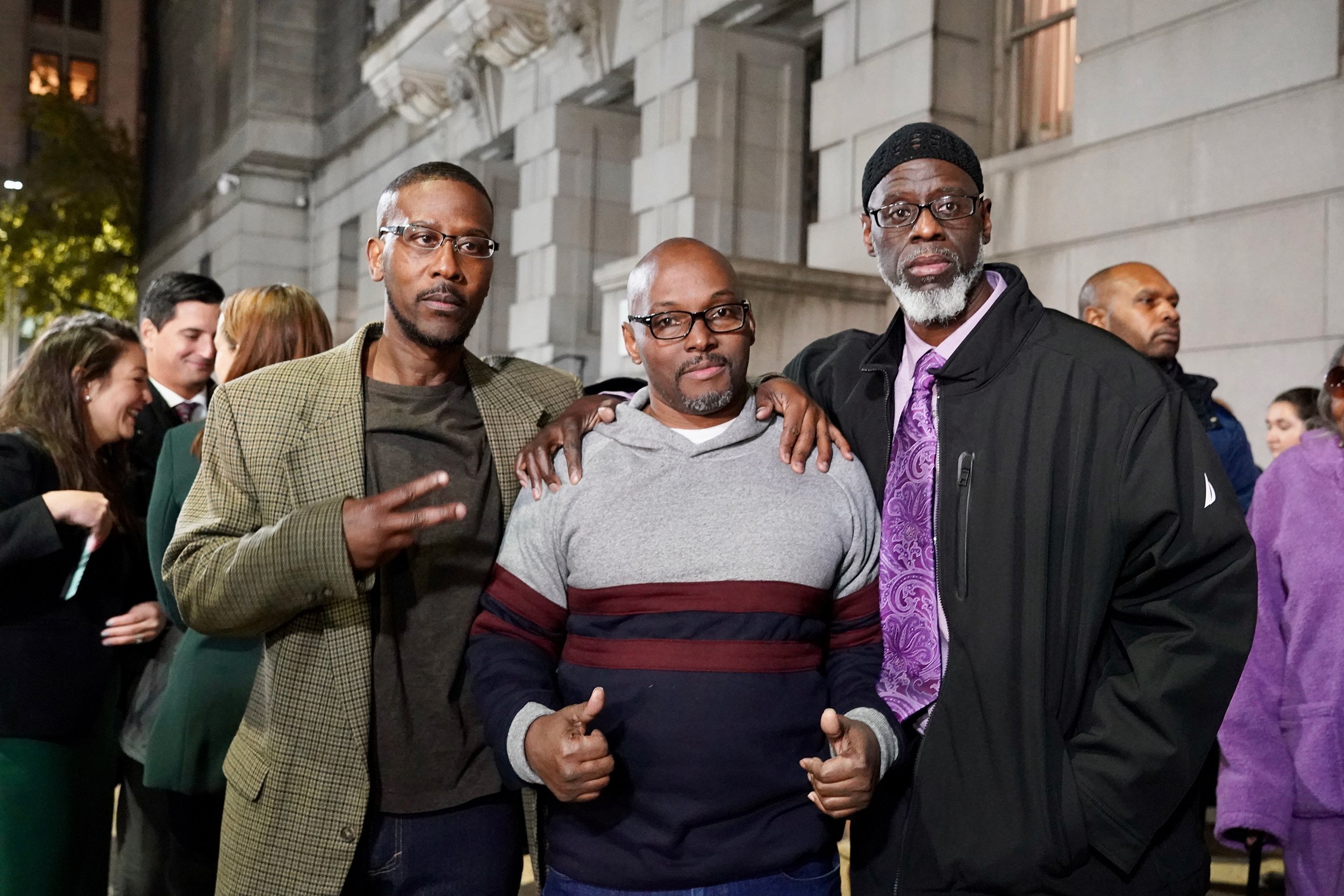
Three Baltimore men who spent 36 years in prison were released after authorities say they were falsely convicted of a 1983 murder. Alfred Chestnut, Ransom Watkins and Andrew Stewart were granted a writ of innocence after being convicted of first-degree murder of a middle school student, DeWitt Duckett. According to police, Duckett, 14, was shot and killed for his coveted Georgetown University basketball jacket in November 1983.
Chestnut has maintained his innocence since his arrest and the parole board denied his early release in part because he refused to admit responsibility for the shooting, the state’s attorney said. After he filed an information request this past spring, he discovered new evidence that was kept from his attorneys during trial. He reached out to Baltimore’s Conviction Integrity Unit, which was reviewing old convictions.

Chestnut and Watkins were 16 at the time of their arrest and Stewart was 17. The three teenagers had been skipping high school classes to visit former teachers at Harlem Park Junior High. Their teachers said they were being “silly,” but not threatening. School security escorted them off campus about half an hour before the murder occurred, according to a joint petition filed by the men and Baltimore City State’s Attorney Marilyn Mosby.
Watkins lawyer said the three teenagers were each arrested Thanksgiving morning, waking up with police with guns drawn on them. They were convicted based on witness testimony and what prosecutors at the time said was a crucial piece of evidence — a Georgetown jacket found in Chestnut’s bedroom. Chestnut’s jacket had no blood or gunshot residue and his mother was able to produce a receipt. A store clerk also testified that she had purchased it recently, the joint petition said.
Lawyers involved in the case said they were “horrified” to see the amount of exculpatory evidence that was hidden from the defense team and jury. Both the suspects and trial witnesses, all minors, were interrogated by police without their parents. Potential witnesses were interviewed in a group and told to “get their story together,” according to Chestnut’s lawyers. Anonymous calls identifying another shooter were kept from the defense, Mosby said. That teenager was seen after the shooting wearing what appeared to be Duckett’s jacket and confessing to the murder, she said. That suspect has since died and all trial witnesses have since recanted. “We have intentional concealment and misrepresentation of the exculpatory evidence, evidence that would have showed that it was someone else other than these defendants,” Mosby said.
Mosby apologized to the men “I don’t think that today is a victory, it’s a tragedy. And we need to own up to our responsibility for it,” Mosby said. “There’s no way we can repair the damage to these men, when 36 years of their life were stolen from them. You were all arrested on Thanksgiving 1983. Now you are free to spend the holidays with your loved ones for the first time in 36 years,” Mosby said in a press conference. The men are now in their early fifties preparing to enter adulthood on the outside for the first time and at least two have never driven a car before. Now, late in life, they will experience a world very different from the one they were barred from since their teens.
Read more
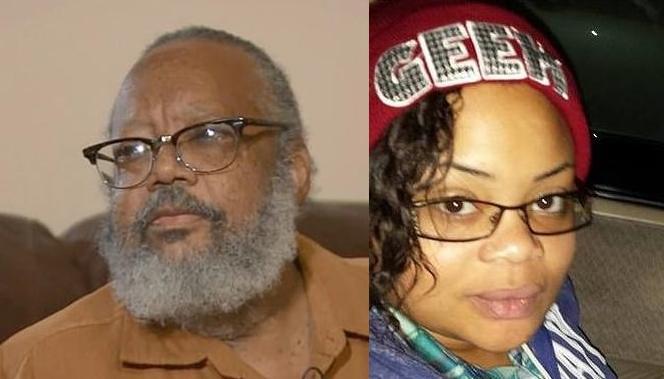
The father of Atatiana Jefferson has died, less than one month after a police officer killed his 28-year-old daughter by shooting through the bedroom window of her own home. Atatiana’s father, Marquis Jefferson, 59, died after suffering a heart attack. The family spokesman said, “I can only sum it up as a broken heart.” Atatiana was his only child and she was killed exactly one month ago, on October 12, by police officer Aaron Dean. The spokesman, Bruce Carter, said Jefferson had been under a lot of stress since his daughter was killed and was also battling Chronic Obstructive Pulmonary Disease, which makes breathing difficult.
Jefferson had been embroiled in a family dispute involving his daughter’s funeral and burial arrangements, which were controlled by her aunt, Bonita Body. He argued that as the surviving parent of Atatiana, he should have control of her burial, and was granted a temporary restraining order to postpone the funeral. The service eventually took place on October 24. “He was battling to be a part of her life to the end,” Bruce Carter, the family’s spokesperson, said. “I think it just got the best of him.”
Lee Merritt, attorney for Atatiana Jefferson’s family, said in a statement they were saddened to learn the news about Marquis Jefferson and “of course” the loss his daughter factored into his death. “Her death rocked the nation but no one felt it more than the people that were directly tied to her in life,” Merritt said. “Those people haven’t had a chance to grieve like normal families. They have been thrust into a very public, very emotional, very draining fight for justice.”
On October 12, at around 2:30 a.m., Dean had arrived at Atatiana’s Forth Worth residence with another officer in response to a non-emergency “wellness check” called in by a neighbor who noticed Atatiana had left her front door open. Atatiana was playing video games with her 8-year-old nephew when she heard noises outside of her home. According to her nephew, she took her handgun from her purse and pointed it “toward the window” just before getting shot by Dean. The two men did not identify themselves as police when they approached the window where Atatiana stood.
Body camera footage showed Dean looked inside a window using a flashlight, spotted someone inside standing near a window and said, “Put your hands up — show me your hands.” He shot seconds later. At no point did he identify himself as an officer and he did not appear to have knocked on the door. Dean resigned from the police department shortly afterward, and was arrested and charged for Atatiana’s murder. He is currently out on a $200,000 bond.
Dean completed police training at the Fort Worth Police Academy in March 2018 and at the time of the shooting, had been with the department for 18 months. Prior to the shooting, the only entry in his Fort Worth police personnel file was about a traffic collision. Dean’s training records from his first year on the job note concerns from supervisors which included that he had “tunnel vision” and “needs improvement on communicating with the public and fellow officers.” Dean’s most recent performance evaluation was made in spring 2019, where he received high marks from a supervisor.
Read more
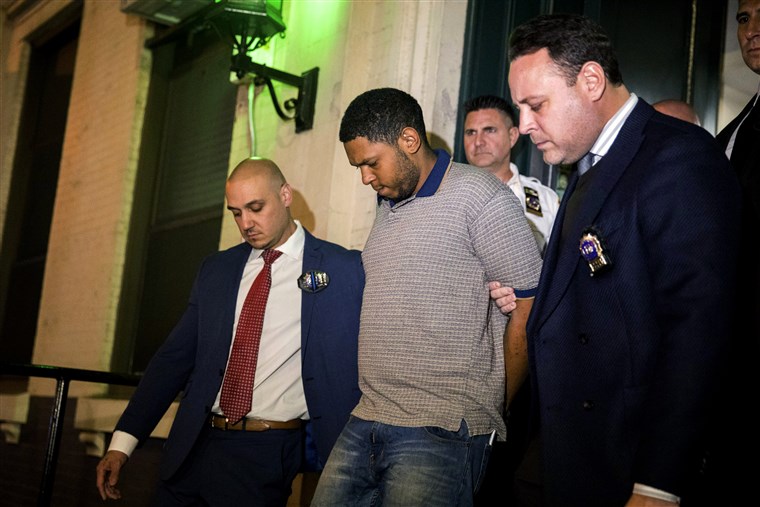
A suspect has been arrested after four homeless men were killed and one was critically injured when they were attacked in New York City early Saturday morning. Police said Randy Rodriguez-Santos, 24, who is homeless, wielded a 15-pound metal pipe and apparently attacked the men randomly as they slept on the sidewalks of Lower Manhattan’s Chinatown. Santos is reportedly also homeless and has struggled with addiction. He is charged with four counts of murder, one count of attempted murder and unlawful possession of marijuana.
Police responded to reports of an assault in progress at Doyers Street and Bowery around 2:10 a.m. and found two men with head wounds. One victim was pronounced dead at the scene and another was taken to the hospital in critical condition. Over the next hour, police discovered additional victims in the area, two men were found outside of 2 East Broadway and another was found outside of 17 East Broadway.
Two witnesses told responding officers that the suspect was wearing a black jacket and black pants, which helped police find him quickly just a few streets away. Rodriguez-Santos was apprehended a few blocks from the scene of the attacks and the weapon was recovered nearby. The attacks left blood splattered on the doorways and sidewalks where the men had been sleeping.
The victims, whose ages range from 48 to 83, were bludgeoned as they slept on the street. Three of the four men killed were identified Monday, as lawmakers and mourners gathered at an emotional memorial for the men at Chatham Square. Several sidewalk tributes of flowers, candles and food were placed for the men who were allegedly killed by another homeless man as they slept. One of the mourners cried as she recalled the oldest victim, 83-year-old Chuen Kwok, always being grateful for the food she gave him. New York State assembly woman Yuh-Line Niou choked back tears as she spoke on the mens’ deaths. “If the change isn’t now, after this, I don’t know when it is.”
The medical examiner’s office later confirmed his identity and those of two other victims: 55-year-old Nazario Vazquez Villegas and 49-year-old Anthony Manson. Santos was arraigned on charges of murder and attempted murder for the bloody rampage. He did not enter a plea and was ordered held without bail. Police officials said Santos has been arrested 14 times, some of those for assault, including one in May for an alleged assault at a Brooklyn homeless shelter.
The suspect’s mother, Fioraliza Rodriguez, 55, told news outlets she had kicked him out about three years ago. He struggled with drugs, assaulted her and his grandfather, and stole from the family, she said. “I never thought he would kill someone,” she said. “I was afraid of him, though, because he punched me. That’s when I told him to get out of my house.”
Read more
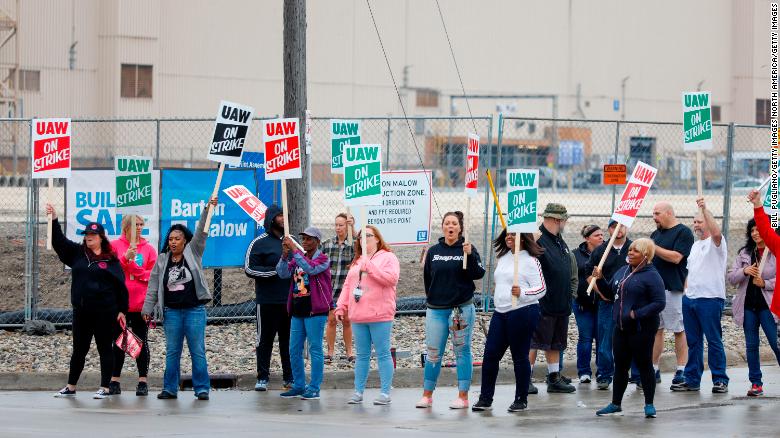
General Motors has told the UAW that it will continue to pay for health coverage for striking workers. GM told the union after it went on strike Sept. 16 at company sites nationwide that it was kicking health care costs to the union, a move that UAW leaders said blindsided them, even though they had anticipated picking up those costs at some point through the strike fund. GM stated they have chosen to work with their providers to keep all benefits fully in place for striking hourly employees, so they have no disruption to their medical care, including vision, prescription and dental coverage.
The strike is the UAW’s first since the Great Recession and GM’s federally induced bankruptcy in 2009. Experts say as the strike continues toward the end of its second week, it has left a lasting economic impact. Strike pay is $250 per week, but it won’t be distributed until the 15th day of picketing. The starting wage for temporary production workers at GM is $15.78 per hour, which is about $630 per 40-hour week. Top-paid production employees, however, earn $30.46 per hour, or about $1,218 per week.
The UAW says that temporary workers are union members doing the same work as permanent employees, but they get half the pay and far fewer benefits. The union wants those workers to get a path to being permanent and get pay and benefits that more closely match their permanent counterparts, even when they’re temporary. GM counters that employing temporary workers is good for permanent employees because they enable the full-time staff to take time off. Hiring temps also gives the company flexibility to scale up production for new models and combat employee absenteeism
The UAW is also fighting for the retention of a health insurance plan in which workers pay about 4% of the costs, an improved pension and assurances that GM — the maker of Buick, Cadillac, GMC and Chevrolet — will not close four plants in Maryland, Ohio and Michigan.
The strike has affected GM facilities in Ohio and Ontario not represented by the UAW. All told more than 3,200 GM workers represented by other unions have been laid off. On Monday, the automaker notified 525 employees at its DMax Ltd. engine plant in Moraine, Ohio, that they temporarily were laid off. GM suppliers, such as Magna International Inc. and Nexteer Automotive, also said they temporarily have had to lay off employees during the strike.
Analysts agree that the cost of the strike is mounting daily for both GM and striking workers, as well as for the broader community. Anderson Economic Group, an East Lansing-based consultant, said in a new analysis Thursday that GM probably has lost profits of $113 million so far, and is now losing money at the rate of $25 million a day. As talks continue toward a UAW-GM contract, negotiations have entered a new stage and moved to the main table. In recent days, talks have been confined to smaller committees as the two sides struggled to hammer out details.
Union leaders have argued that GM workers deserved a bigger slice of the company’s profits, which they say have totaled $35 billion in North America over the last three years. Union members are calling for fair wages, saying for every $1 a GM employee made, CEO Mary Barra made $281. As the strike enters its 3rd week, the national impact will continue until an agreement is reached.
Read more
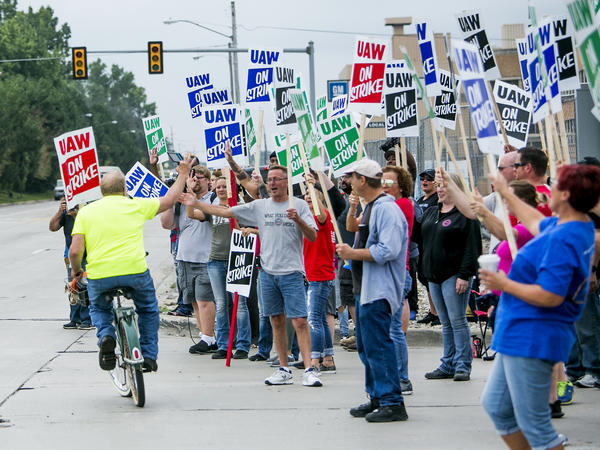
On September 15th, nearly 50,000 members of the United Auto Workers (UAW) launched a strike, walking out of over 50 General Motors facilities. Workers say GM continues to deny employees’ demands for fair conditions and compensation despite leading the company to record profits following bankruptcy and a federal bailout. The nearly 50,000 full-time and temporary workers represented by the UAW make up about half of its workforce.GM workers say they are pushing for a more equitable contract that will guarantee better wages for new hires, stronger health-care benefits and more job security. Workers are forgoing their paychecks during the strike, though the UAW will pay them $250 a week from its strike fund.
GM has made over $30 billion in the past six years, since recovering from its 2009 bankruptcy. Although they received profit-sharing checks that totaled $52,500 for the same period, workers want pay raises that will show up year after year. They gave up cost-of-living pay raises and made other concessions to keep the company afloat during its 2009 bankruptcy, and now they want to be repaid. Longtime workers have received only two raises since 2010. Workers hired after 2007 still make less than older workers, and the union wants to erase that gap.
The company is facing a global auto sales slowdown and also says health care costs are too high, and it wants to cut labor costs so they are closer to U.S. factories owned by foreign competitors. Senior GM workers now make around $30 per hour, but with benefits, it adds up to $63 per hour. Total labor costs run an average of $50 per hour at the foreign plants. The car giant has moved to close a handful of production facilities in the United States in recent years despite strong profitability margins. GM made $8.1 billion in profit after taxes last year but announced the closure of four factories, scuttling thousands of jobs. GM says it has offered to make $7 billion in investments and create 5,400 jobs, including introducing electric trucks, opening a battery cell manufacturing site and investing in eight existing facilities.
The strike has effectively halted GM’s production in the US and just a day after the strike, GM responded with a letter announcing they had cut off health insurance for the nearly 50,000 people on picket lines across the country. GM spokesman David Barnas said the decision to cut workers’ health care was a standard practice during stoppages, likening it to the cessation of worker paychecks. A spokesperson for the UAW stated that they would cover the striker’s health-care fees under COBRA in the interim from the pool of money it keeps for strikes. Employee dental and vision plans will not be covered during the strike.
The effects of the strike have been felt quickly, when GM dismissed 1,200 workers from an assembly plant in Ontario, Canada just three days after the strike started. GM has said the temporary layoffs were the result of parts shortages in the United States because of the strike. The factory had produced full-size pickup trucks. Analysts say GM could be losing as much as $50 million to $100 million a day from the stoppage. 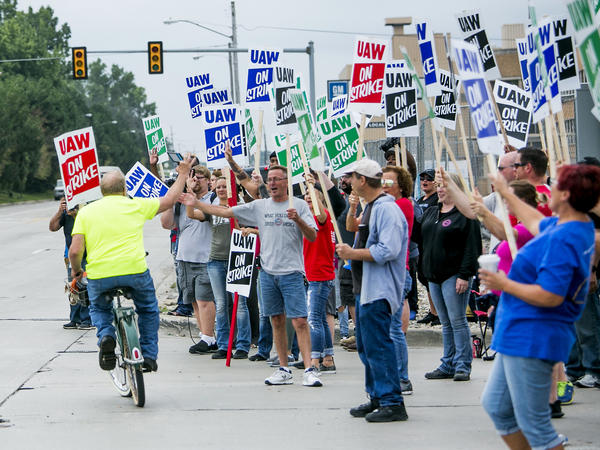
Read more
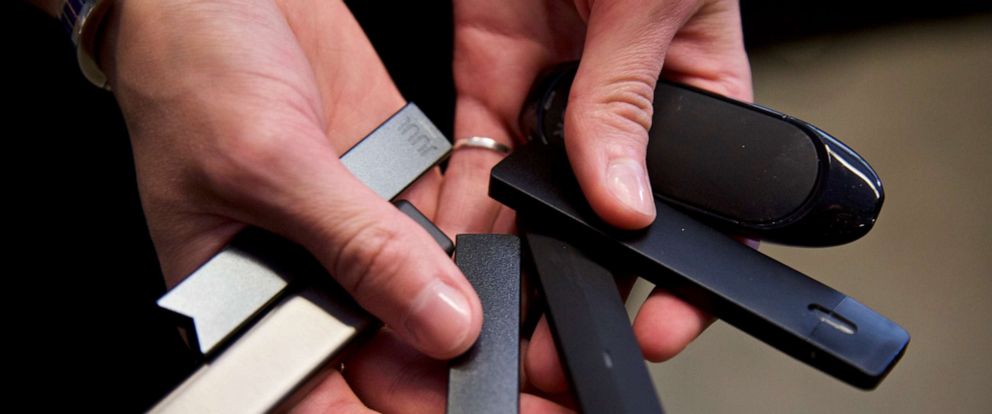
A 50-year-old Kansas woman became the sixth person in the USA to die of a vaping-related lung illness, an outbreak that has ramped up health concerns nationwide. Kansas State Epidemiologist Farah Ahmed said in a statement that the unidentified patient had a history of underlying health issues and had been hospitalized with symptoms that progressed rapidly. Dr. Lee Norman, secretary of the Kansas Department of Health and Environment said that the patient did have underlying health issues but nothing that would have foretold the fact that within a week after starting using e-cigarettes for the first time, she developed full-blown acute respiratory distress. Doctors say it’s clear the vaping related lung illness is responsible for her rapid deterioration.
Kansas health officials noted six more cases associated with the outbreak, three patients confirmed with the illness and three cases under investigation. Five previous vaping-related deaths were confirmed in California, Illinois, Indiana, Minnesota and Oregon. After the Kansas fatality, the Centers for Disease Control and Prevention tallied six deaths and more than 450 possible cases of severe lung injury in 33 states and one jurisdiction. The CDC confirmed that investigators narrowed their focus and that the additive vitamin E acetate is a chemical involved in many of the cases, but officials emphasized it is not in all of the cases being reviewed.
People with a history of vaping who experience lung injury symptoms should seek medical care, according to Kansas health officials. Nationally, symptoms include shortness of breath, fever, cough, vomiting and diarrhea. Other symptoms reported by some patients include headache, dizziness and chest pain. Though many patients across the nation have been in their late teens, 20s or 30s, the Kansas death is a warning that older adults may be at particular risk.
Patients tend to arrive at the hospital short of breath and coughing. Many have also had fevers, general fatigue and gastrointestinal problems. It is not unusual for patients to be put into intensive care units, and on ventilators. All reported vaping nicotine, THC or a combination of the two in the days and weeks before falling ill. The CDC has recommended people stay away from vaping devices while investigators work to pinpoint exactly what’s behind the illnesses.
The rapid and worrisome increase has now prompted a Congressional hearing on the matter, after a policy discussion on the matter. The recent death has prompted the U.S. President to call for a ban on thousands of e-cigarette flavors in an effort to get people to give up e-cigarettes. E-cigarette companies have been given years to gather and submit evidence their products are safe and effective ways to quit smoking traditional tobacco. A federal judge has set a May 2020 deadline for companies to do so.
Dr. Norman said “God only knows what all is in there. There should be a moratorium on the sale of these products until we know more.” The American Lung Association also released a statement warning the public that e-cigarettes could cause irreversible lung damage. “No one should use e-cigarettes or any other tobacco product,” Harold Wimmer, national president of the American Lung Association, wrote in the statement. “This message is even more urgent today following the increasing reports of vaping-related illnesses and deaths nationwide.”
Read more

The U.S. Coast Guard has recovered all but one body after a commercial diving boat named the Conception, caught fire in the early hours of Monday morning off the coast of Santa Cruz Island in Southern California. The only survivors were five crew members of the 75-foot vessel who were sleeping on or above deck. All 33 passengers and one crew member sleeping below deck at the time of the fire were killed in horrific disaster. Authorities have yet to determine the cause of the fire.
The boat and company, Truth Aquatics Inc., are well-known in the tight-knit Southern California diving community, which is now reeling from the horrific maritime tragedy that killed teenagers, families, veteran divers, and one crew member, who were wrapping up a three-day scuba diving trip. Divers were inspecting the ship’s wreckage with plans to raise it from the ocean floor, but that process may be complicated by forecast high winds in the coming days.
The surviving crew members told a harrowing story of their frantic attempts to save the passengers trapped below deck in a bunk room already engulfed in flames. One member of the crew told of hearing a noise from his bunk on the wheelhouse deck of the Conception and that when he opened the door of the wheelhouse, he saw flames erupting from the galley area but never heard smoke alarms. He told investigators he tried to get down a ladder but flames had engulfed the ladder.
Scrambling, the other crew members jumped from the bridge of the boat to the main deck. One person broke their leg doing so. They then rushed to the galley’s double doors to try and reach the passengers below, but the fire was already too intense.
At around 3:15 a.m., the captain made a frantic mayday call to authorities, telling them that the boat was engulfed, 33 people couldn’t escape, and “there’s no escape hatch for any of the people on board.” At that point, due to heat, flames, and smoke, the crew had to jump from the boat. Two crew members swam to the back of the Conception to get the inflatable skiff, then collected the others and made it to a nearby fishing boat, the Grape Escape.
Shirley Hansen, owner of the Grape Escape, said that she and her husband awoke at 3:30 a.m. to “horrific pounding” and a group of distraught, wet men, some injured and just in their underwear. Once on the Hansen’s boat, the men tried to call 911 for rescue and two crew members then took the dinghy boat back to the Conception to try and rescue any survivors but there were none. The Hansen’s said you could hear explosions from the engulfed diving boat every couple of minutes.
Officials have been looking at the dive boat’s maintenance and inspection records, which the Coast Guard said were up to date, and trying to understand if the 34 victims who had been sleeping in rows of narrow bunks even had a chance to escape. Officials are using advanced DNA technology to identify the victims. None of the names of the dead, who ranged in age from 17 to 60, have been publicly released by authorities but friends and family have confirmed who was on the boat. Among the victims were a family of five, a teacher and his daughter, and a diving instructor and marine biologist.
Read more
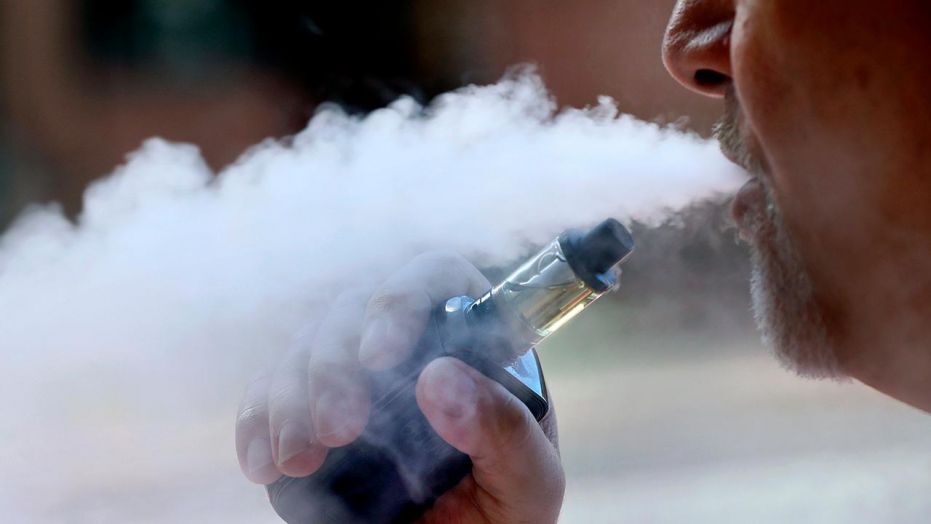
Five deaths in the US have been linked to vaping as health officials continue to grapple with the dangers of e-cigarette use and the exact cause of the deaths. All five died after developing a severe lung illness that is believed to be linked to vaping. The exact cause of the deaths and the dangers of vaping still remain unclear but are being investigated on both the federal and state level.
More than 450 possible cases of respiratory illnesses have been reported in 33 states after use of e-cigarette products, according to the Centers for Disease Control and Prevention. The average age of those with the illness is 19, which is not surprising considering of the almost 10 million vapers in the US, nearly half of those are under 35, with 18-24-year-olds the most regular users.
Those who have suffered from the lung illness reported experiencing coughing, chest pain or shortness of breath before their health deteriorated to the point of respiratory failure and they needed to be hospitalized, according to the Centers for Disease Control and Prevention. Respiratory failure is where your body either can’t break down oxygen, produce carbon dioxide, or both. The result is that your lungs stop working and breathing becomes difficult. Other reported symptoms include nausea, vomiting, diarrhea, fatigue, fever and weight loss. Many victims have ended up with acute respiratory distress syndrome, a life-threatening condition in which fluid builds up in the lungs and prevents the oxygen people’s bodies need to function from circulating in the bloodstream.
Those affected used a number of different devices from vaporizers to smaller e-cigarettes and a variety of different brands of liquids and cartridges. Health officials recently said many cases involved products that contained THC, the mind-altering substance in marijuana. The FDA has now collected over 120 samples to test for different chemicals, including nicotine, cannabinoids, additives and pesticides.
They also recently identified a common contaminant in some of the cannabis products used by patients across the country — an oil derived from vitamin E. It remains unclear whether this is the cause or one of the causes of the illnesses. The Centers for Disease Control and Prevention issued a statement that advised against using electronic cigarettes while it investigates the issue. The agency also said people should stop buying vaporizers, cartridges and liquids off the street or modifying vaping products bought legally.
New York Health officials have focusing their investigation on Vitamin E acetate after they found high levels of it in nearly all of the cannabis-containing vapes tested. At least one vape containing both cannabis and vitamin E has been linked to every patient who submitted products for testing, the New York health department said. Vitamin E isn’t known to be harmful if ingested as a vitamin supplement, but it could be dangerous if inhaled because of its “oil-like” properties. It has not been approved as an additive for New York’s medical marijuana program.
Federal health officials are warning that vitamin E is likely only one piece of the puzzle. The CDC is running its own tests on more than 100 samples for vitamin E, pesticides, opioids, poisons and other toxins. “No one substance or compound, including vitamin E acetate, has been identified in all the samples tested,” Zeller said. “The samples we’re continuing to evaluate show a mix of results.”
Read more

Capital One says a hacker exposed the personal data of its customers, including about 140,000 Social Security numbers and tens of thousands of bank account numbers. Tens of millions of credit card applications were also stolen. The hack comes a week after the settlement reached between Equifax and the Federal Trade Commission concerning a hack in 2017 that affected 147 million customers.
The FBI arrested Seattle software engineer Paige Thompson over the breach and charged her with computer fraud and abuse. Thompson’s online activity led investigators to her, as she allegedly boasted about the hack on social networking sites. Thompson was allegedly able to find an opening in Capital One’s systems and exploit a weakness in some misconfigured networks, according to a Wall Street Journal analysis of hundreds of Ms. Thompson’s online messages and interviews with people familiar with the investigation.
Security professionals for years have warned about that gap, which the messages and interviews suggest she used to trick a system in the cloud to uncover the sensitive credentials she needed to access the vast number of customer records. Once she found the Capital One data, she was able to download it, the people familiar with the investigation said. All, apparently, without triggering any alerts.
In online messages in accounts that prosecutors have said were Thompson’s, she claimed to have also applied those techniques to access a trove of online data from other organizations. The messages were posted in online forums. Her lawyer didn’t respond to requests for comment and she remains in custody until a bail hearing scheduled for Aug. 15.
The data breach to Capital One servers on March 22nd and 23rd exposed the personal information of nearly 106 million of the bank’s customers and applicants. The breach resulted in the hacker gaining access to personal information related to credit card applications from 2005 to early 2019 for consumers, applicants and small businesses. Capital One detected the breach on July 19. Among the personal data exposed were names, addresses, dates of birth, credit scores, transaction data, Social Security numbers and linked bank account numbers.
About 140,000 Social Security numbers and 80,000 linked bank account numbers were exposed, Capital One said. And for Canadian credit card customers and applicants, approximately 1 million Social Insurance Numbers. Capital One said, however, that no credit card account numbers or login credentials were revealed in the hack. Capital One said it will notify customers and credit card applicants whose data was exposed in the breach.
Read more














